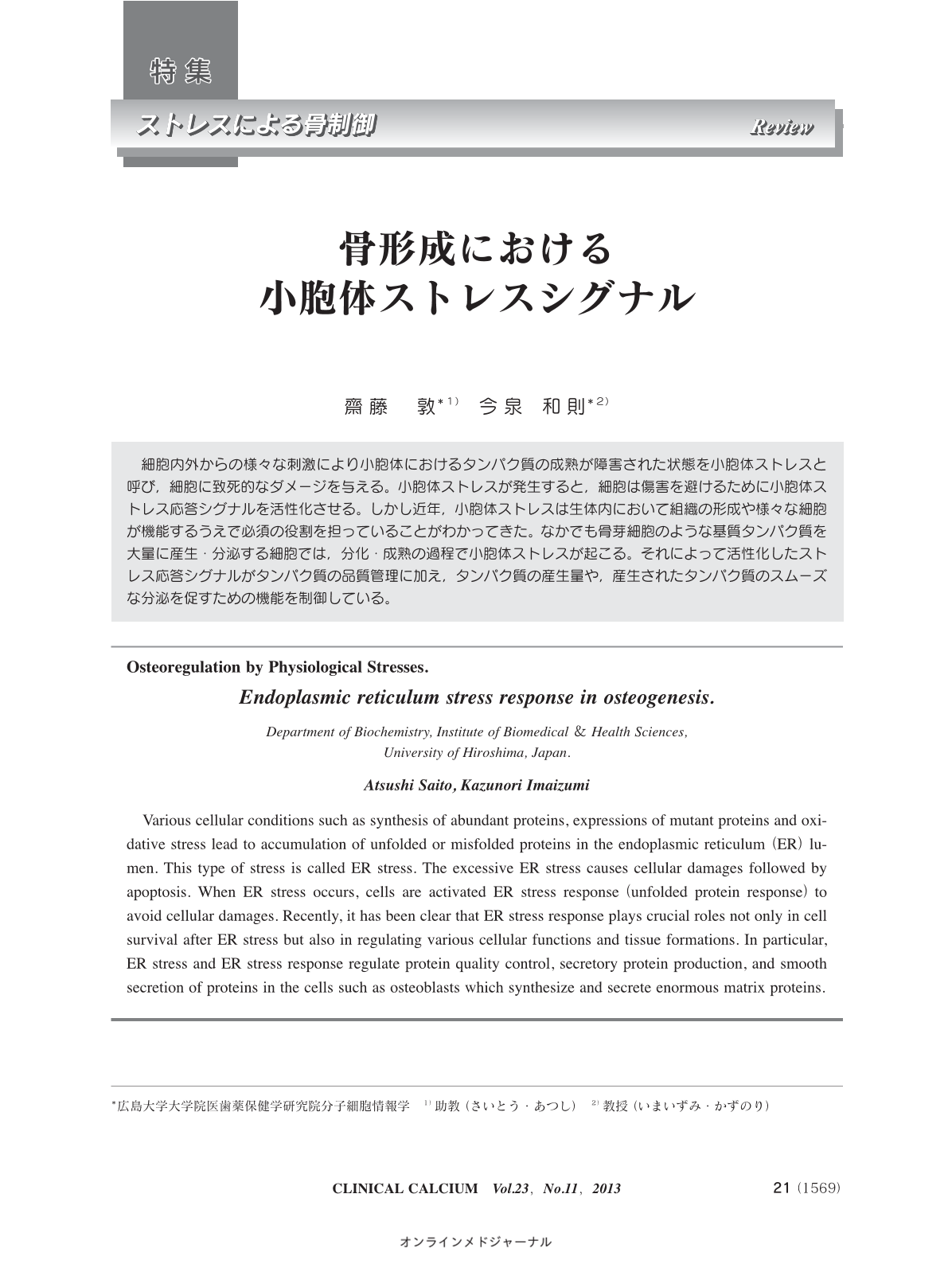Japanese
English
- 有料閲覧
- Abstract 文献概要
- 1ページ目 Look Inside
- 参考文献 Reference
細胞内外からの様々な刺激により小胞体におけるタンパク質の成熟が障害された状態を小胞体ストレスと呼び,細胞に致死的なダメージを与える。小胞体ストレスが発生すると,細胞は傷害を避けるために小胞体ストレス応答シグナルを活性化させる。しかし近年,小胞体ストレスは生体内において組織の形成や様々な細胞が機能するうえで必須の役割を担っていることがわかってきた。なかでも骨芽細胞のような基質タンパク質を大量に産生・分泌する細胞では,分化・成熟の過程で小胞体ストレスが起こる。それによって活性化したストレス応答シグナルがタンパク質の品質管理に加え,タンパク質の産生量や,産生されたタンパク質のスムーズな分泌を促すための機能を制御している。
Various cellular conditions such as synthesis of abundant proteins, expressions of mutant proteins and oxidative stress lead to accumulation of unfolded or misfolded proteins in the endoplasmic reticulum(ER)lumen. This type of stress is called ER stress. The excessive ER stress causes cellular damages followed by apoptosis. When ER stress occurs, cells are activated ER stress response(unfolded protein response)to avoid cellular damages. Recently, it has been clear that ER stress response plays crucial roles not only in cell survival after ER stress but also in regulating various cellular functions and tissue formations. In particular, ER stress and ER stress response regulate protein quality control, secretory protein production, and smooth secretion of proteins in the cells such as osteoblasts which synthesize and secrete enormous matrix proteins.



